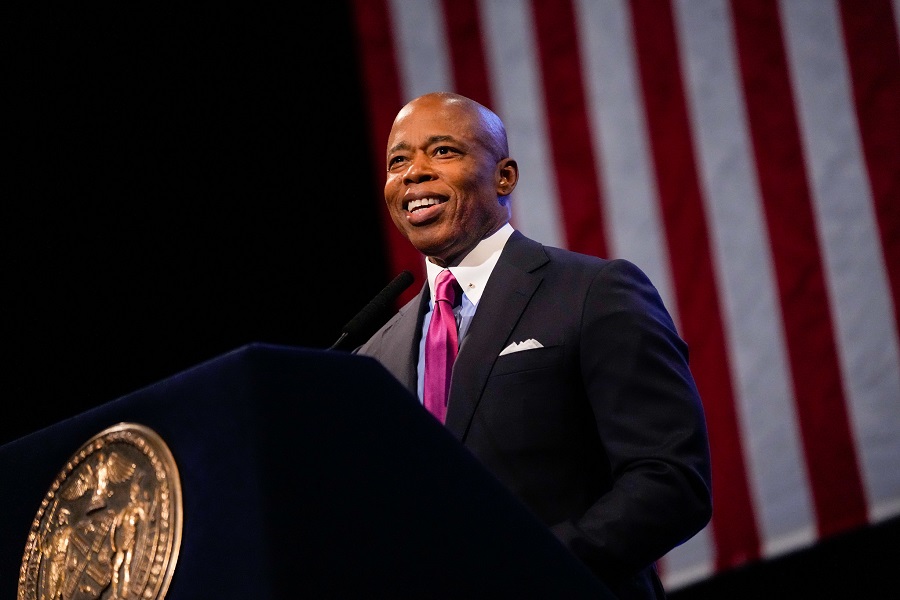 Over a nearly three decade period from 1980 to 2008, U.S. incarceration rates have accelerated from an estimated 500,000 to 2.3 million people. Disproportionately, African-Americans and Latinos totaled 58% of all prisoners in 2008, despite only representing one quarter of the U.S. population. So what does this have to with the world of visual art? If you’re Dread Scott it has everything to do with art and what he believes is its responsibility to be a catalyst for change.
Over a nearly three decade period from 1980 to 2008, U.S. incarceration rates have accelerated from an estimated 500,000 to 2.3 million people. Disproportionately, African-Americans and Latinos totaled 58% of all prisoners in 2008, despite only representing one quarter of the U.S. population. So what does this have to with the world of visual art? If you’re Dread Scott it has everything to do with art and what he believes is its responsibility to be a catalyst for change.
Scott a longtime political artist—perhaps most famously known for his controversial 1989 work What is the Proper Way to Display a U.S. Flag? —has collaborated with the organization No Longer Empty for a project addressing mass incarceration and the criminalization of youth titled, Wanted. The multilayered project includes a series of mock police sketches created in and posted throughout Harlem depicting youth wanted for innocuous non-illegal behavior. This act of subversion is meant to call into question society’s negative perceptions of youth of color that often leads to increased police harassment, arrests and death as evidenced by recent high-profile tragic cases such as the killing of Michael Brown. [Full disclosure: writer served as creative director of No Longer Empty’s programming].
Check out images from the project and highlights from our conversation with Scott about the intersection of art, politics and revolution.
 On the politics of mass incarceration:
On the politics of mass incarceration:
“America is a country that was founded on slavery and genocide. But the war on drugs policies started by [Ronald] Reagan and presided over by all presidents, including [Bill] Clinton and [Barack] Obama have served to quadruple the prison population since 1980 with most of those prisoners being Black or Latino. The war on drugs systematically targeted this population and has resulted in what Michelle Alexandar appropriately labels The New Jim Crow. And coupled with the laws, police focus, prosecutorial proceedings, sentencing, and parole control; there is a cultural rationalization and ideology that Reagan put forward that was widely touted in the major media at the time that depicted Black youth as unredeemable criminals and monsters.
This continues to this day to the point where George Zimmerman can murder Trayvon Martin and get away with murder or where Staten Island police can choke Eric Garner to death, get caught on video and have no indictment for three weeks and counting.”
“We need a revolution and anything short of that is not going to end the oppressive conditions people are confronted with. I’m not trying to change laws and while I hope for broader media coverage, I don’t evaluate a project based on this. My work raises important questions that are confronting humanity. I hope to create space for people to think about these questions and in some cases think in new and deeper ways about them. This contributes to a broader process of people building a movement for revolution.”
On feedback from the community:
“The youth really got what Wanted is about and got what this was about right away. They saw it as a way to be defiant about how they are being treated. Some older folks were more hesitant and I believe that this cautiousness is unfortunately too common amongst older people who tend to overly focus on potential risks.”
“Overall the feedback has been overwhelmingly positive. When taking the Wanted project flyers to put up in barber shops, nail salons and bodegas people were overwhelmingly receptive. We talked with people and many shared stories of how the police had abused or harassed them or their friends and often wanted copies of the flyers to have. I’m certain that there will be some in the community who don’t like this project, but I have not heard that sentiment yet.”
On the future of Wanted:
“Wanted is going to be increasingly visible in Harlem in the coming days. And right now people can download copies of the poster and expand its reach, including to new cities. Beyond this, now that it is out in the world, I have to assess where things are at with the project and see what else I want to focus on and plot any next steps.
 The weekly column, On the “A” w/Souleo, covers the intersection of the arts, culture entertainment and philanthropy in Harlem and beyond and is written by Souleo, founder and president of event/media content production company, Souleo Enterprises, LLC.
The weekly column, On the “A” w/Souleo, covers the intersection of the arts, culture entertainment and philanthropy in Harlem and beyond and is written by Souleo, founder and president of event/media content production company, Souleo Enterprises, LLC.
Become a Harlem Insider!
By submitting this form, you are consenting to receive marketing emails from: . You can revoke your consent to receive emails at any time by using the SafeUnsubscribe® link, found at the bottom of every email. Emails are serviced by Constant Contact




















